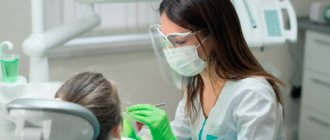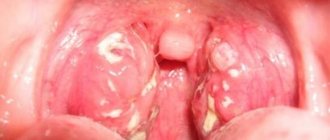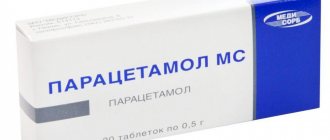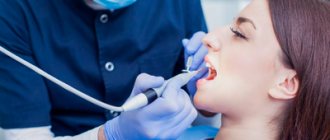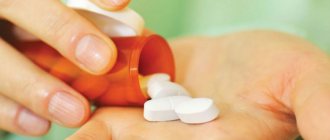– substances of natural or semi-synthetic origin that inhibit the growth of microorganisms or cause their death.
Antibiotics only affect microorganisms. Their effect does not apply to viruses or fungi. Therefore, it is advisable to use antibiotics for diseases caused by microbes. In case of viral diseases (hepatitis, influenza, etc.), their use makes no sense and can even cause harm due to side effects.
Depending on the chemical structure, antibiotics are divided into groups , for example, fluoroquinolones, penicillins, tetracyclines, macrolides, cephalosporins, etc.
Each group may contain antibiotics of different generations (for example, in the fluoroquinolone group, ciprofloxacin belongs to the first generation, levofloxacin to the second, and moxifloxacin to the third).
Basic principles of antibacterial therapy
There are certain requirements for prescribing antibiotics.
The antibiotic prescribed by the doctor must penetrate well into the tissues where there is a purulent-inflammatory process. For example, lincomycin penetrates well into bone tissue and is used for osteomyelitis, amoxiclav - into soft tissues, and can be used in the treatment of boils and erysipelas.
The antibiotic must have an inhibitory effect on the microorganism that caused the inflammation. For example, it makes no sense to use Tsifran for anaerobic infections (caused by anaerobic microorganisms), because Tsifran has no effect on them. In such a situation, Avelox is indicated - an antibiotic that acts incl. and anaerobic microorganisms.
To determine the sensitivity of the microorganism to antibiotics, a culture is taken from the wound. The difficulty is that the doctor usually receives the culture result in about 5–8 days, and an antibiotic must be prescribed immediately upon detection of microbial inflammation. In such a situation, empirical antibiotic therapy is used, the meaning of which is to prescribe an antibiotic that suppresses the most likely causative agent of the infection. For example, for a boil or carbuncle, antibiotics are prescribed that suppress Staphylococcus aureus, because It is this microorganism that most often causes suppuration in boils and carbuncles. Then, when the culture result comes, you can change the antibiotic to the one to which the microbe is sensitive in this particular case (if this is still necessary).
Antibiotics should be used to minimize the risk of side effects and complications in a given patient. For example, fluoroquinolones should not be prescribed to patients with epilepsy; aminoglycosides are not suitable for patients with hearing loss.
Antibiotics of the lincomycin group
Home Medical encyclopedia Medicines Antimicrobial and antiparasitic medicines
ANTIBIOTICS OF THE LINCOMYCIN GROUP
Clindamycin
Synonyms: Dalatsin C, Klimitsin, Kleotsin, Klinimicin, Klinitsin, Sobelin, Klinocsin, etc.
Pharmachologic effect. In terms of chemical structure, mechanism of action and antimicrobial spectrum it is close to lincomycin, but is more active against some types of microorganisms (2-10 times).
The drug penetrates well into body fluids and tissues, including bone tissue. It passes through histohematic barriers (the barrier between blood and brain tissue) poorly, but with inflammation of the meninges
the concentration in the cerebrospinal fluid increases significantly.
Indications for use. Indications for use are basically the same as for lincomycin: infections of the respiratory tract, skin and soft tissues, bones and joints, abdominal organs, septicemia (a form of blood infection by microorganisms), etc.
Method of administration and dose. Before prescribing a drug to a patient, it is advisable to determine the sensitivity to it of the microflora that caused the disease in this patient. Doses of the drug depend on the severity of the disease, the condition of the patient and the sensitivity of the infectious agent to the drug.
For adults with infectious diseases of the abdominal cavity, as with other complicated or severe infections, the drug is usually prescribed as injections at a dose of 2.4-2.7 g per day, divided into 2-3-4 injections. For milder forms of infection, the therapeutic effect is achieved by prescribing smaller doses of the drug - 1.2-1.8 g/day. (in 3-4 injections). Doses up to 4.8 g/day have been successfully used.
It is not recommended to prescribe more than 600 mg of the drug intramuscularly at a time.
For adnexitis (inflammation of the uterine appendages) and pelvioperitonitis (inflammation of the peritoneum, localized in the pelvic area), it is administered intravenously in a dose of 0.9 g every 8 hours (with the simultaneous prescription of antibiotics active against gram-negative pathogens). Intravenous medications are given for at least 4 days and then for 48 hours after the patient's condition improves. After achieving a clinical effect, treatment can be continued with oral forms (for oral administration) of the drug, 450 mg every 6 hours until completion of the 10-14-day course of therapy.
The drug is also used internally for the treatment of infectious and inflammatory diseases of mild to moderate severity. Adults are prescribed 150-450 mg every 6 hours. The duration of treatment is determined individually, but for infections caused by beta-hemolytic streptococcus, it should be continued for at least 10 days.
For the treatment of cervical infections caused by Chlamydiatrachomatis (chlamydia), 450 mg of the drug 4 times a day for 10-14 days.
For children, it is preferable to prescribe the drug in syrup form. To prepare the syrup, add 60 ml of water to the bottle with flavored granules. After this, the bottle contains 80 ml of syrup with a concentration of 75 mg of clindamycin per 5 ml.
For children over 1 month. The daily dose is 8-25 mg/kg body weight in 3-4 doses. In children weighing 10 kg or less, the minimum recommended dose should be ½ teaspoon of syrup (37.5 mg) 3 times a day.
For children over 1 month of age, the drug for parenteral (bypassing the digestive tract) administration is prescribed at a dose of 20-40 mg/kg body weight per day only in cases of urgent need.
To prepare solutions of the drug, water for injection, saline solution, and 5% glucose solution are used as a solvent. The prepared solutions remain active throughout the day. The concentration of the drug in the solution should not exceed 12 mg/ml, and the infusion rate should not exceed 30 mg/min. Duration of infusion - 10-60 minutes. To ensure the desired rate of entry of the drug into the body, 50 ml of a solution with a concentration of 6 mg/ml is administered over 10 minutes; 50 ml of solution with a concentration of 12 mg/ml - for 20 minutes; 100 ml of solution with a concentration of 9 mg/ml - for 30 minutes. It will take 40 minutes to administer 100 ml of a solution with a concentration of 12 mg/ml.
It is not recommended to prescribe the drug in a dose exceeding 1.2 g when infused over an hour.
For bacterial vaginitis (inflammation of the vagina caused by bacteria), a vaginal cream is prescribed. A single dose (one full applicator) is inserted into the vagina before bed. The course of treatment is 7 days.
Side effects and contraindications are the same as for lincomycin.
Release form. In capsules containing 0.3 g, 0.15 g and 0.075 g of clindamycin hydrochloride (75 mg for children); 15% solution of clindamycin phosphate (150 mg per 1 ml); in ampoules of 2; 4 and 6 ml; flavored granules (for children) for the preparation of syrup containing 75 mg of clindamycin palmitate hydrochloride per 5 ml, in 80 ml bottles; vaginal cream 2% in tubes of 40 g with the application of 7 single applicators (5 g - one single dose - 0.1 g of clindamycin phosphate).
Storage conditions. List B: In a dry place, protected from light.
LINCOMYCIN HYDROCHLORIDE (Lincomycinihydrochloridum)
Synonyms: Neloren, Albiotic, Cillimycin, Linkocin, Lincolnensin, Liocin, Mitsivin, Medogliin, etc.
Pharmachologic effect. Active against gram-positive microorganisms; has no effect on gram-negative bacteria and fungi. In therapeutic concentrations it has a bacteriostatic (preventing the proliferation of bacteria) effect. Well absorbed. The maximum concentration in the blood is achieved 2-4 hours after administration. Penetrates into bone tissue.
Indications for use. Staphylococcal infections; septic processes (diseases associated with the presence of microbes in the blood); osteomyelitis (inflammation of the bone marrow and adjacent bone tissue) caused by penicillin-resistant pathogens.
Method of administration and dose. Before prescribing a drug to a patient, it is advisable to determine the sensitivity to it of the microflora that caused the disease in this patient. The daily dose for adults with parenteral (bypassing the digestive tract) administration is 1.8 g, single dose - 0.6 g. In case of severe infection, the daily dose can be increased to 2.4 g. The drug is administered 3 times a day at intervals of 8 hours Children are prescribed a daily dose of 10-20 mg/kg, regardless of age.
Lincomycin hydrochloride is administered intravenously only by drip at a rate of 60-80 drops per minute. Before administration, 2 ml of a 30% antibiotic solution (0.6 g) is diluted with 250 ml of isotonic sodium chloride solution.
Duration of treatment - 7-14 days; for osteomyelitis, the course of treatment is up to 3 weeks. and more.
The drug is taken orally 1-2 hours before or 2-3 hours after meals, since in the presence of food in the stomach it is poorly absorbed.
A single oral dose for adults is 0.5 g, a daily dose is 1.0-1.5 g. The daily dose for children is 30-60 mg/kg (2+3 doses at intervals of 8-12 hours).
The duration of treatment, depending on the form and severity of the disease, is 7-14 days (for osteomyelitis, 3 weeks or more).
For patients with renal and hepatic insufficiency, lincomycin hydrochloride is prescribed parenterally in a daily dose not exceeding 1.8 g, with an interval between doses of 12 hours.
Side effect. Often - nausea, vomiting, pain in the epigastrium (the area of the abdomen located directly under the convergence of the costal arches and the sternum), diarrhea (diarrhea), glossitis (inflammation of the tongue), stomatitis (inflammation of the oral mucosa). Rarely -
reversible leukopenia (decrease in the level of leukocytes in the blood), neutropenia (decrease in the number of neurophils in the blood), thrombocytopenia (decrease in the number of platelets in the blood); transient (passing) increase in the level of liver transaminases (enzymes) and bilirubin in the blood plasma. When administered intravenously in large doses, phlebitis (inflammation of the vein wall) is possible. With rapid intravenous administration - decreased blood pressure, dizziness, weakness. With long-term treatment with the drug in high doses, the development of pseudomembranous colitis (intestinal colic, characterized by attacks of abdominal pain and the release of large amounts of mucus in the feces) is possible. Very rarely - allergic reactions in the form of urticaria, exfoliative dermatitis (redness of the skin of the entire body with severe peeling), Quincke's edema, anaphylactic shock (an immediate allergic reaction).
Contraindications. Impaired liver and kidney function. The drug should be prescribed with caution to patients with a history of allergic reactions.
Release form. Capsules 0.25 g (250,000 units) in packages of 6, 10 and 20 pieces; bottles 0.5 g (500,000 units). 30% solution in ampoules of 1 ml (0.3 g per ampoule), 2 ml (0.6 g per ampoule).
Storage conditions. List B. At room temperature.
LINCOMYCIN OINTMENT (UngentumLincomycini)
Pharmachologic effect. An ointment containing the antibiotic lincomycin. Has an antimicrobial effect.
Indications for use. Pustular diseases of the skin and soft tissues.
Method of administration and dose. Before prescribing a drug to a patient, it is advisable to determine the sensitivity to it of the microflora that caused the disease in this patient. Apply a thin layer externally 1-2 times a day after removing pus and necrotic (dead) masses.
Side effect. Allergic reactions.
Contraindications. Liver and kidney diseases. The drug should be prescribed with caution to patients with a history of allergic reactions.
Release form. 2% ointment in tubes of 15 g. 100 g of ointment contain: lincomycin hydrochloride - 2.4 g, zinc oxide - 15 g, potato starch - 5 g, petroleum paraffin - 0.5 g, medical petroleum jelly - up to 100 g.
Storage conditions. In a cool place.
| print version | This information is not a guide to self-treatment. A doctor's consultation is required. |
Routes of administration of antibiotics
- oral (by mouth), intramuscular and intravenous - should also be taken into account in outpatient practice. Thus, for patients receiving treatment at home, it is not advisable to prescribe antibiotics that require three intramuscular injections (for example, cefazolin), because such a patient will have to go to the treatment room three times a day.
Only a doctor should prescribe an antibiotic , because the use of antibiotics without indications or when there are contraindications can cause side effects and complications, and ultimately cause harm rather than benefit.
Indications for prophylactic antibiotics
Antibacterial drugs may not always be prescribed during implantation. For example, when installing artificial roots without tilting the mucoperiosteal flap, antibiotics are usually not prescribed. This is due to the low traumatic nature of the operation, in which even no stitches are applied. In other cases, antibiotics are mandatory for dental implantation. Among the indications:
- simultaneous installation of several root substitutes with the formation of a large flap;
- replanting of bone material simultaneously with implantation;
- ridge augmentation (hard tissue augmentation) using grafts or own bone blocks transplanted from another location;
- multiple simultaneous implantation with immediate loading of artificial roots with temporary or permanent crowns;
- the use of closed or open sinus lift when installing implants under the maxillary sinuses.
Antibiotics for all types of dental implantation can also be prescribed for unsatisfactory initial oral hygiene, installation of root substitutes against the background of periodontitis, and chronic diseases of the nasopharynx.

